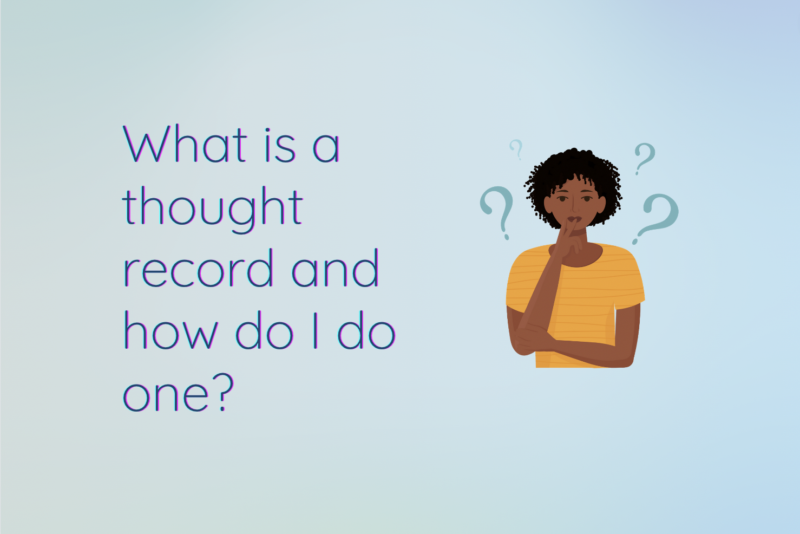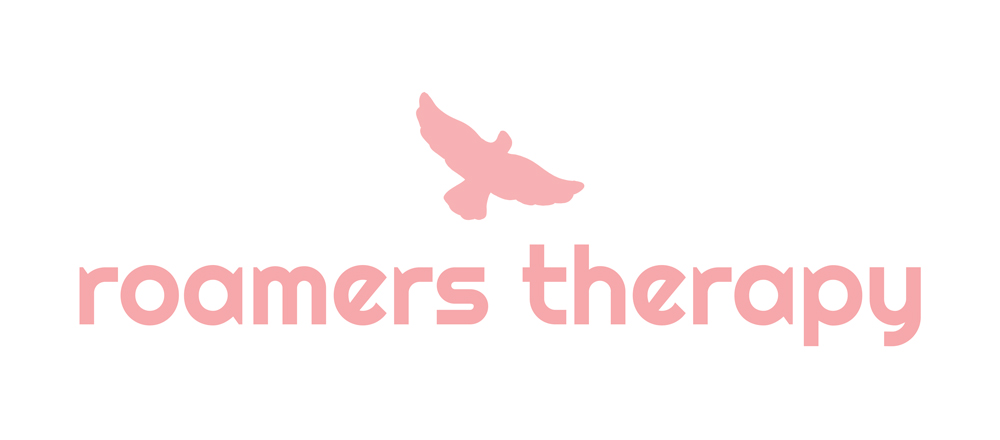What is a thought record and how do I do one?
Roamers Therapy | September 2023

You may have heard your therapist or someone else use the term “thought record” before. Perhaps you’ve even done one yourself without even realizing! A thought record is an essential element to the beginning processes of cognitive behavioral therapy. To put it simply, a thought record helps you to build the relationship between your thoughts, feelings, and behavior. Oftentimes, a thought record will be used to help you begin to challenge your irrational or distorted automatic thoughts. It also allows you to bring an awareness to your thoughts in order to learn more about yourself and how your mind responds to situations.
How do I do a thought record?
First, create yourself a chart with four columns labeled Situation, Thoughts, Emotions, and Behaviors. This chart can act as a daily log for you to practice recording your automatic thoughts.
Situation: Identify what was going on for you. What is the context?
Example: You studied many hours for an exam and didn’t get the grade you were
hoping for on it.
Thoughts: Identify your automatic thoughts. What immediately ran through your mind?
Example: “I’m such a bad student. I’m so stupid. I’m going to fail.”
Emotions: Identify what you were feeling in this moment. What was the intensity of this
feeling? (on a scale of 1-10)
Example: Inferior, upset, depressed, worthless
Behavior: Identify your behavioral response. What did you do?
Example: You start to think negatively of yourself and don’t change your study habits or
seek help on the next exam. You might believe it won’t matter and you will just
fail again.
As you continue to log your automatic thoughts, feelings, and behavior, you might start to see what situations are especially triggering for you or begin to identify patterns in your automatic thoughts. It is so easy to think and feel without realizing its impact on your behavior. This exercise will help you develop an increased awareness of how intertwined your thoughts, emotions, and behavior really are. The next step in this exercise will be to start replacing your automatic thoughts with an alternative thought. This means you will practice reframing your automatic thoughts to challenge yourself to think differently in the situations that trigger negative automatic thoughts.
Thought records serve as a helpful tool to begin training your mind to recognize this connection between your thoughts, feelings, and behavior. It is an exercise you can start practicing on your own. Then, you can talk to your therapist about what it was like for you, what you noticed, and reflect together.
At Roamers Therapy, our psychotherapists are here to support you through anxiety, depression, trauma and relationship issues, race-ethnicity issues, LGBTQIA+ issues, ADHD, Autism, or any challenges you encounter. Our psychotherapists are trained in Cognitive Behavioral Therapy, Dialectical Behavioral Therapy, Psychodynamic Therapy, Acceptance, and Commitment Therapy, Person-Centered Therapy, and Gottman Therapy.
Whether you’re seeking guidance on a specific issue or need help navigating difficult emotions, we’re ready to assist you every step of the way.
Contact us today to learn more about our services and schedule a session with our mental health professionals to begin your healing journey. To get started with therapy, visit our booking page.
First, decide if you’ll be paying out-of-pocket or using insurance. If you’re a self-pay client, you can book directly through the “Book Now” page or fill out the “Self-Pay/Out-of-network Inquiry Form.” If you’re using insurance, fill out the “Insurance Verification Form” to receive details about your costs and availability. Please let us know your preferred therapist. If your preferred therapist isn’t available, you can join the waitlist by emailing us. Once your appointment is confirmed, you’ll receive intake documents to complete before your first session.
This page is also part of the Roamers Therapy Glossary; a collection of mental-health related definitions that are written by our therapists.
While our offices are currently located at the South Loop neighborhood of Downtown Chicago, Illinois, we also welcome and serve clients for online therapy from anywhere in Illinois and Washington, D.C. Clients from the Chicagoland area may choose in-office or online therapy and usually commute from surrounding areas such as River North, West Loop, Gold Coast, Old Town, Lincoln Park, Lake View, Rogers Park, Logan Square, Pilsen, Bridgeport, Little Village, Bronzeville, South Shore, Hyde Park, Back of the Yards, Wicker Park, Bucktown and many more. You can visit our contact page to access detailed information on our office location.
